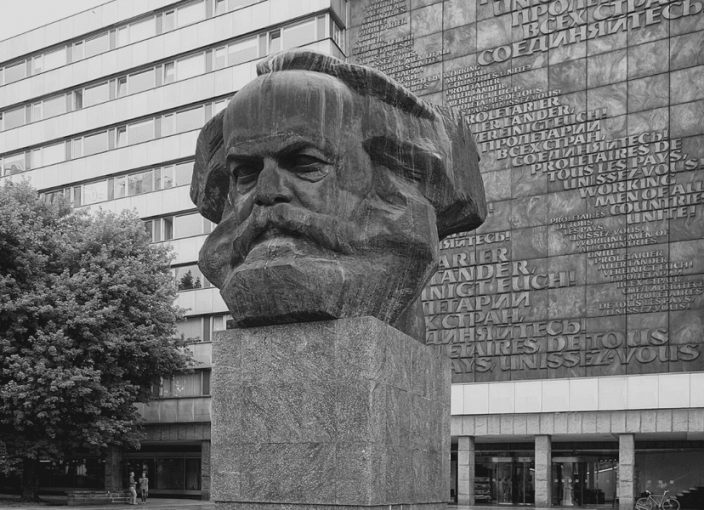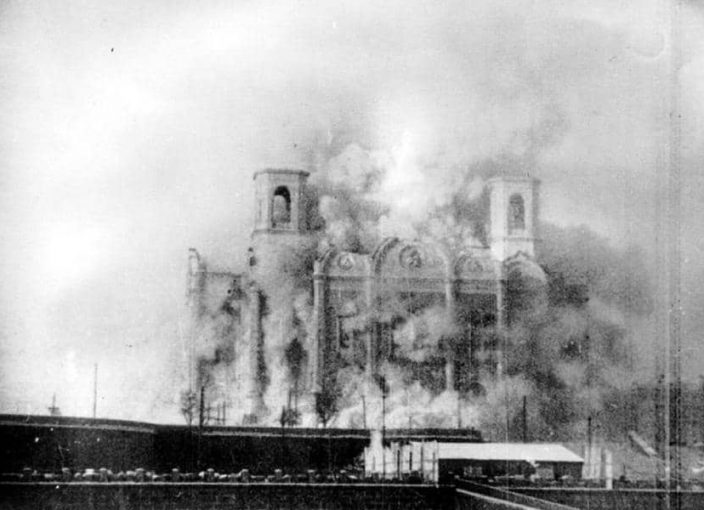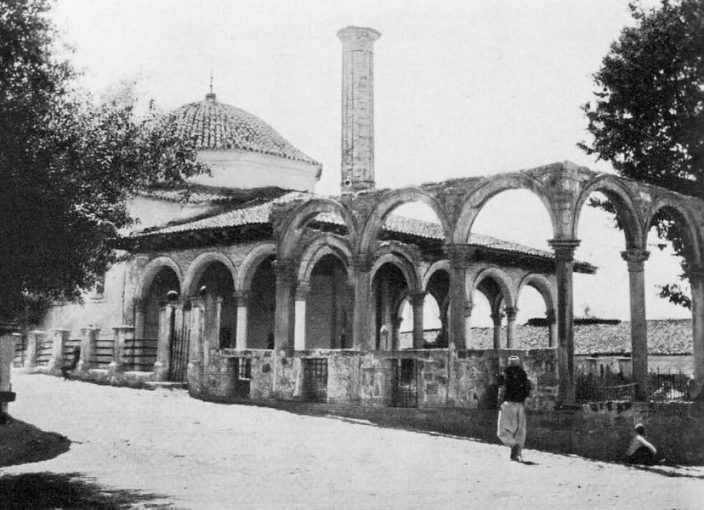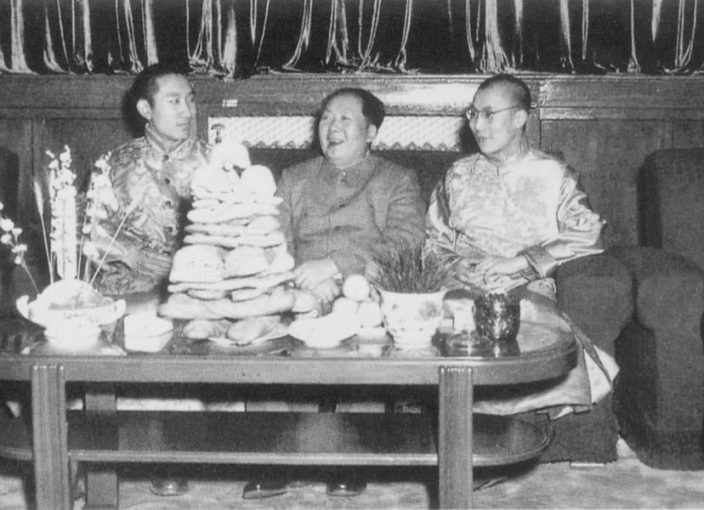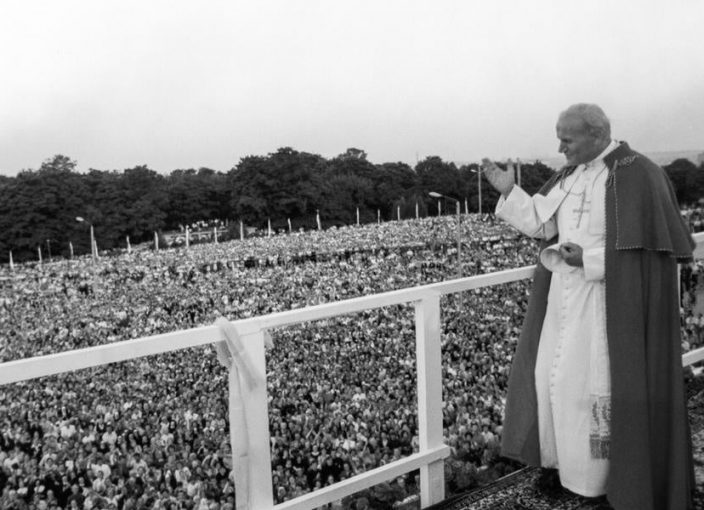Chapter 3
Communism and Religion
“Within the philosophical system of Marx and Lenin, and at the heart of their psychology, hatred of God is the principal driving force, more fundamental than all their political and economic pretensions. Militant atheism is not merely incidental or marginal to Communist policy; it is not a side effect, but the central pivot. To achieve its diabolical ends, Communism needs to control a population devoid of religious and national feeling, and this entails the destruction of faith and nationhood. Communists proclaim both of these objectives openly, and just as openly go about carrying them out.”
Alexsandr Solzhenitsyn1
The Marxist-Leninist View of Religion
Most Americans believe in God, and a majority observe some form of religion or spiritual practice.2 Communism—theoretically, ideologically, and historically—opposes God and all forms of religion. From the time of Karl Marx to today, communism is based on the abolition of religion. In 1844, Marx wrote, “Religion is the sigh of the oppressed creature, the heart of a heartless world, and the soul of soulless conditions. It is the opium of the people.”3 He compared religion with opium because he believed that religion, like a drug, provides at best temporary relief from pain and suffering. For Marx, man created religion to survive life’s hardships. This famous quote is more than a summary of Marx’s views of religion and God. Marx was an avowed atheist, and he denied the existence of a divine being or God. This denial stands as a major cornerstone of Marx’s outlook, in which religion is a symptom of the evil bourgeois society.4 He predicted that communism would eliminate the need for religion: once freed from capitalist oppression, people would no longer need the illusory relief they sought in artificial faith. In its place, Marx believed that ‘human self-consciousness’ would, through the abolition of the capitalist society, remove the causes for alienation and suffering.5
Vladimir Lenin agreed with Marx: “’Religion is the opium of the people’—this dictum by Marx is the corner-stone of the whole Marxist outlook on religion.”6 Lenin then expanded upon Marxism with the argument that all religion is a tool used by the bourgeois to repress the working class.7 The Marxist-Leninist outlook drove the decision to formally institute anti-religious policy at the Russian Communist Party’s Eighth congress in 1920. Here, the Bolsheviks decided, “As far as religion is concerned, the RCP [Russian Communist Party] will not be satisfied by the decreed separation of Church and State.”8 Rather than wait for the creation of a communist society to make religion unnecessary (as Marx believed), Lenin would actively seek to destroy it. This policy has served as the foundation for decades of religious persecution in the Soviet Union and the rest of the communist world.
Karl Marx Monument in Chemnitz, Germany. Photo via Velvet under CC BY-SA 4.0.
The Soviet Union And Religion
From the Bolshevik Revolution onward, religious persecution was a key feature of the Soviet regime. Lenin characterized religion as “one of the forms of spiritual oppression which everywhere weighs down heavily upon the masses of the people.”9 At the same time, Lenin presented communism as a liberating doctrine that would free those shackled by the restrictions of religious belief. Both a militant atheist and communist revolutionary, he worked to eliminate religion in general and to overthrow the Church-backed monarchy in Russia in particular, with violence, if necessary.10 While he worked to cement the power of the Bolsheviks, Lenin primarily focused on attacking religion as an institution, pushing religion out of public life.11 Stalin and later generations of Soviet rulers would advance Lenin’s atheism and attack religion even in private life.12
Prior to the Bolshevik Revolution, the Orthodox Church was a vital aspect of Imperial Russian society. Lenin’s approach required the destruction of an essential and ingrained part of Russian culture. Lenin’s actions against the Orthodox Church included seizing land, taking away various privileges and legal roles from the church, and removing all signs of religion from government practices.13 Bolsheviks and later communists filled journals and newspapers with propaganda directed against all believers. They created atheist museums in former churches, and used education programs specifically designed to eliminate religious customs and beliefs.14 At the local level, authorities violently implemented Lenin’s policies of religious eradication, executing Orthodox and Catholic bishops and priests, imprisoning or exiling others, closing churches by force, and desecrating objects of religious veneration.15 By the end of the attacks, 28 bishops, 1,200 priests, and over 20,000 parishioners had been killed or executed. The communists had also stolen 940 pounds of gold and 550 tons of silver from the Church to fund the government. In the end, Lenin and the Bolsheviks achieved another communist goal and destroyed the last element of traditional Russian civilization.16
Although the Orthodox Church was the largest religious denomination in Russia, other religious groups were persecuted just as violently. For example, in 1930 one Soviet official reported that “87 percent of Muslim religious centers have closed down, as have more than 10,000 of 12,000 mosques.”17 Stalin utilized the League of Militant Godless (a group established by the communists in 1925 to promote atheism and socialism) to crush all religious influences in the Soviet Union. In 1932, the League issued a Five-Year Plan of Atheism that aimed to leave not a single house of prayer in the USSR by 1937.18 By the end of 1937, Russian authorities arrested almost 140,000 Orthodox clergymen, 85,300 of which were shot.19 The Five-Year Plan of Atheism, which paralleled Stalin’s Great Terror (1936-1938), had a dramatic impact on religious life in Soviet Russia and beyond. While Stalin would briefly ease persecution of religion and try to use it under state control during World War II, Khrushchev’s de-Stalinization marked a return to more militant atheism.20
Demolition of Christ the Savior Cathedral, Moscow, 1931. Photo via public domain.
Religious Oppression in the Eastern Bloc
The Soviet oppression of religion wasn’t limited by its own borders. The USSR also enforced religious persecution across the Soviet-occupied Eastern Bloc. Stalin and his successors targeted Christians throughout its republics, and worked to eliminate religion across their occupied territories in central and eastern Europe. In 1951, the Soviets carried out Operation North, a deportation plan aimed at exiling almost 10,000 Jehovah’s Witnesses from Ukraine, Belarus, Moldova, and the Baltics.21 Following Stalin’s death in 1953, Nikita Khrushchev carried out a renewed and vigorous assault on religious institutions and ideals.22 The Soviet rulers conducted a widespread closure of churches. Khrushchev’s anti-religion campaign of 1959-64 targeted the 20,000 Orthodox churches in the USSR. By 1975 only 7,000 remained.23
In 1967, Albania became the world’s first atheist country with a proclamation by communist dictator Enver Hoxha. He argued that the nation’s religious diversity would destroy Albania’s national uniqueness, and that the religion of Albanians is Albanianism.24 Hoxha solidified this proclamation in 1976, when Albania added its official policy of atheism to the country’s constitution. Catholics and Muslims were equally vulnerable under the Hoxha regime. Professors of religion suffered repression and were shot or imprisoned. The Albanian communists imprisoned and tortured, for 25 years, the son of a Muslim cleric who delivered a speech entitled, “What is Communism and its consequences for Albanian religion and the nation.”25
Kubelie Mosque in Albania, prior to demolition. Photo via the public domain.
Bulgaria also persecuted its Muslim population, particularly during a forced assimilation campaign throughout the 1980s. This effort forced Muslim minorities to renounce their heritage and caused a mass exodus of Turkic-Bulgarians. At the height of the last anti-Turkish assimilation campaign in 1985, a leading Bulgarian Communist Party official declared Bulgaria a one-nation state that would contain no other peoples and nations.26
Stalin and the Soviet Union also targeted Jews in their anti-religious crusade. Although Soviet repression and the horrors of Hitler’s crimes are not comparable, the persecuted Jewish victims of the Soviet Union deserve to have their stories told. Antisemitism was entrenched in Kremlin leadership. At the time of the Molotov-Ribbentrop Pact, Stalin assured Nazi Foreign Minister Ribbentrop that he would remove Soviet Jews from leading positions the moment he had enough qualified non-Jews to replace them.27 Even after World War II, Stalin waged a brutal forced assimilation campaign against the Jewish population in Soviet territories, and prominent Jews were murdered by Soviet state officials.28
China’s Religious Persecution
Officially, Article 36 of the Chinese constitution recognizes freedom of religion: “No state organ, public organization or individual may compel citizens to believe in, or not to believe in, any religion; nor may they discriminate against citizens who believe in, or do not believe in, any religion.”29 In reality, the Chinese Communist Party (CCP) exerts totalitarian control over religion and ensures the country’s five legal faiths—Buddhism, Taoism, Islam, Catholicism, and Protestantism—adhere to Beijing’s ideology and policy.30 The CCP established the practice of supervised religion in 1997 that placed the state as the head of all religious institutions in China, requiring all spiritual organizations to register with authorities or risk persecution.31
Religious persecution began with Chairman Mao Zedong’s annexation of Tibet in 1950 and continued throughout China with the Great Leap Forward and the Cultural Revolution. In Tibet, China’s invasion was followed by an attempt at forced assimilation and cultural genocide, including the almost total destruction of Buddhist monasteries and monastic life.32 There and elsewhere in China, religious sites such as temples, churches, and mosques were often shut down or converted into prisons or military installations.33 The CCP arrested clergy from all faiths and sent them to re-education camps due to their “bourgeoisie” status.34 The government specifically targeted Buddhism: destroying monasteries, beating or killing monks, burning copies of the Buddhist canon, and melting sacred images for their metal. The government also confiscated Buddhist properties and land.35
Chairman Mao with the Dalai and Panchen Lama. Photo via the public domain.
Religious persecution continues to this day in China. After Mao’s death, the CCP adopted a policy of limited religious toleration in exchange for loyalty to the party.36 In February 2020, current President Xi Jinping clarified the Communist Party’s position on religious freedom, drafting a new regulation which orders religious leaders to “love the country, uphold the CCP’s leadership, uphold the socialist system, abide by the Constitution, laws, regulations and statutes, practice the socialist core values, support China’s religious principle of independence and self-determination, support China’s policy of Sinification of religion, support national unification, ethnic solidarity, and religious harmony and social stability.”37
Today, those who decide to practice their faith outside the confines of what Beijing deems appropriate are subjected to gross human rights violations. In June 2021, human rights experts reported that forced organ harvesting in China appears to target specific ethnic, linguistic, or religious minorities. China holds these people in detention, often without explaining the reasons for arrest.38 Furthermore, China imprisons Uyghur Muslims in re-education camps as it wages a genocide by means of execution and forced sterilization against religious minorities in the nation’s Xinjiang region.39
China has also achieved success in creating a majority atheistic country. According to the World Economic Forum, China is the most atheistic country in the world, and, in 2020, the U.S. State department estimated that 52 percent of the population identified themselves as atheist.40 Religious groups in China must worship in underground churches, or in jail cells, because China actively persecutes religion that does not conform to China’s strict policies. In China today, eight Roman Catholic Bishops are being actively persecuted by the CCP for their beliefs and religious activities.41 One of every five people in the world are spiritually shackled.42
People of Faith Persevere
Communists wanted to eradicate religion because they believed that faith had the power to influence peoples’ actions, something the communists feared they could not control. Religion gave people hope, allowed people to think for themselves, and reminded people that they could find meaning in life outside of communism. Communism misunderstands human nature. The persistent efforts of the communist party to eradicate religion could not and has never eliminated all religious practice. People have and will always long for something deeper, and instinctively know that there is more to life than being part of the state and its means of production. Under communist persecution of religion, courageous faith leaders and followers have always emerged to stand for their belief in God and against communist oppression.
While communism promoted and funded atheism, religion moved underground to survive and grow. Countries such as Poland created covert underground seminaries to educate future priests, including young Karol Wojtyla, who would later go on to become Pope John Paul II and help defeat communism. In 1979, Pope John Paul II made a historic visit to his native Poland.43 The Pope, who had lived under Nazism and Communism in Poland, strongly condemned both ideologies, and became a significant figure in the collapse of communism in Poland and the rest of Eastern Europe.44 John Paul’s visits to his homeland revealed to the world that the Polish people had never lost their faith, and were united in their opposition to communism.45
Pope John Paul II in Poland, 1979. Photo via RealyEasyStar/ Fotografia Felici.
The seminary that Pope John Paul II attended was led by Archbishop Saphiea in Krakow, Poland during both the Nazi and Soviet occupations. During this period, students in Saphiea’s seminary lived with the risk that if they were caught by either totalitarian system they faced deportation to concentration camps, imprisonment, or execution. Even with these risks, many willingly became martyrs to save the Church and its message for future generations. Following Pope John Paul II’s example, Father Jerzy Popieluszko took up this mission in Poland. He consistently spoke out against the evils of the communist regime in his sermons and became a target for the Polish Security Service. On October 19, 1984, his body was found in the Vistula River, badly bruised and beaten.46 Father Popieluszko’s example and words encouraged Poles peacefully to resist communist oppression.
Religious leaders throughout Central and Eastern Europe suffered similar fates to Popeiluszko in fighting for religious freedom. Richard Wurmbrand, a Lutheran minister in Romania, preached against the communist regime in bomb shelters, helped smuggle Bibles into Russia, and is reported to have distributed around one million copies of the Gospels to Russian troops by disguising the books as communist propaganda.47 Romanian communist officials frequently arrested Wurmbrand and his wife for their efforts, beat and tortured them, and at one point threatened them with execution.48
The above examples are but a few of the many faith leaders who courageously stood for their beliefs to fight against communism’s vision of an atheist society. Contrary to the predictions of Marx and the active efforts of many communist leaders, religious belief and practice did not fade away with the establishment of communism. Just the opposite happened: religion and faith leaders ultimately assisted in destroying Marx’s ideology and communism as a system of rule in Europe and continue to stand against communism around the world.
That is not to say, however, that decades of communist rule did not have a lasting impact on religious belief in many countries. Communism ultimately changed religious affiliations in several European nations such as the Czech Republic, Estonia, Hungary, and Latvia. According to 2020 data from the U.S. State Department, 62% of Czech Republic citizens, 54% of Estonians, 23% of Hungarians, and 31% of Latvians report no religious identification.49 The 2022 statistical Atlas of European Values shows low and often declining rates of belief in the importance of religion, belief in God, and regular church attendance.50
